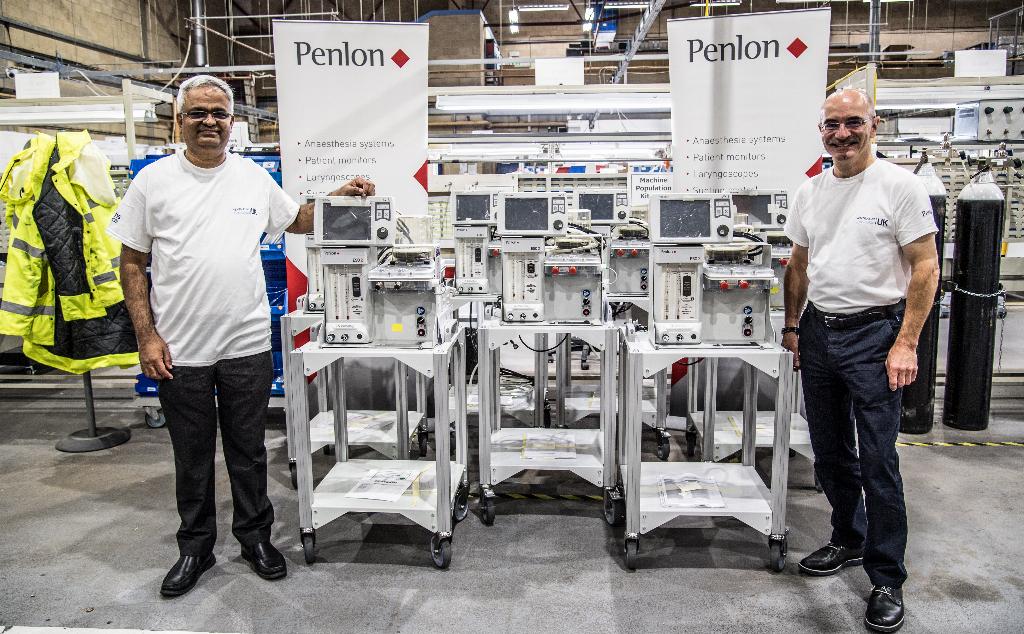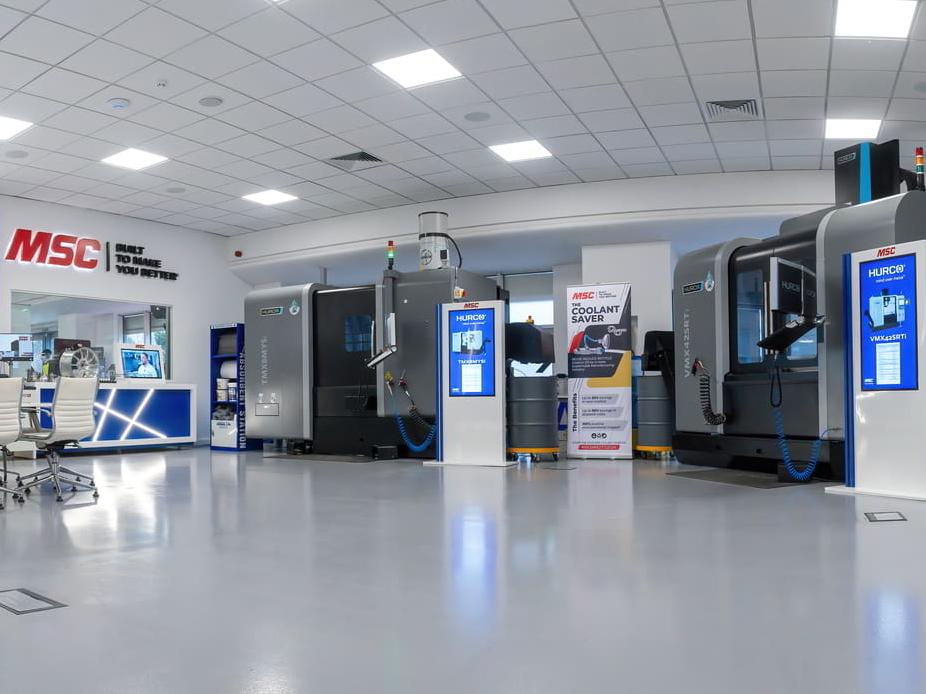VentilatorChallengeUK: one year on

Time flies. Around a year ago now, COVID-19 gatecrashed our lives leaving a wanton trail of destruction and carnage in its wake. But the anniversary also marks the launch of something truly remarkable and inspiring – the VentilatorChallengeUK initiative. The man tasked with orchestrating this monumental project was Dick Elsy CBE, CEO of the High Value Manufacturing Catapult. Dave Tudor reports.
VentilatorChallengeUK was born out of a national crisis not seen since the Second World War. COVID-19 was ripping through the population at an alarming rate; hospital admissions were rising rapidly and on the verge of spiralling out of control.
COVID-19 is predominantly a respiratory virus and the NHS simply didn’t have enough ventilators. Something had to be done and fast. With Dick Elsy at the helm VentilatorChallengeUK came to life and the rest is history. Terms like Dunkirk Spirit are often misused but in this case are unquestionably warranted. Britain’s army of manufacturers rallied round, worked around the clock, rolled their sleeves up and got the job done.
We’ve written about the immense efforts of UK manufacturing companies and their contributions to VentilatorChallengeUK a lot in PES over the past year, but in this article the perspective flips and we hear the thoughts of the man who pulled the levers, flicked the switches and set the strategies.
But just who is Dick Elsy CBE?
Well, he’s a man that has spent much of his career in the automotive industry working for giants such as Land Rover, BMW and Jaguar. With the latter, he was instrumental in developing revolutionary, ground-breaking manufacturing systems and methodologies to make aluminium cars at a time when everything previously was made from steel.
With Land Rover he was heavily involved in the original Discovery programme and served on the Board. He then went on to project manage the Freelander programme from start to finish with responsibility for all aspects of manufacturing, from engineering and tooling through to production, automation and machinery. This was a project that created many jobs and contributed around £12 billion to the UK economy.

Fast forwarding – in 2012 he became CEO of the High Value Manufacturing Catapult (HVMC) which brings together more than 3,000 employees and over £800 million of assets, supporting both industry and academia. It represents the greatest concentration of advanced manufacturing research capability in Europe. There are seven closely knit HVMC centres in total – three of which I’m sure readers will be very familiar with – the AMRC and Nuclear AMRC in Sheffield and the MTC in Coventry. In total, the HVMC has secured more than £1 billion in government funding for advanced manufacturing projects.
Desperate measures for desperate times
One of the HVMC’s real strengths is its convening power and ability to bring companies together to work collaboratively on challenging projects – and that’s exactly what happened with the VentilatorChallengeUK initiative.
Around this time last year, as the pandemic gathered momentum, the Government realised that we simply didn’t have enough ventilators in the UK to treat the sick people that were hospitalised through COVID-19.
“It was a desperate situation,” Dick Elsy remembers. “The Cabinet Office asked representatives from industry if they could help manufacture ventilators. A specification was submitted which was essentially a list of performance requirements for the breathing device required.
“Everyone wanted to get involved,” he continues. “I remember being part of a Zoom call, chaired by Minister for the Cabinet Office Michael Gove with 100 companies taking part, but when he said can you go away and make them then, there was a vacuous silence.
“It was clear that someone needed to coordinate this effort so at the end of the meeting I introduced myself and volunteered. In reality, the expertise we have on tap at the HVMC and our experience in bringing companies together meant we were ideally suited to the task in hand, so that’s what happened.”
Mr Elsy started making phone calls to his contacts. Through his position as CEO of the HVMC, he interfaces with excellent engineers and manufacturing companies every day. Most importantly for this project however, he needed people he knew well and could trust.

Production on steroids
The initial core consortium consisted of representatives from GKN Aerospace, McLaren Inspiration Healthcare Group, Meggitt, Renishaw. Thales and Ultra Electronics. and later extended to include Ford, Airbus, Siemens, Rolls-Royce and Smiths Group.
As well as McLaren, other UK-based F1 teams brought their respective skillsets to the table: Haas, Mercedes, Red Bull Racing, Racing Point, Renault Sport Racing and Williams. In total, 33 companies, spanning logistics specialists to component manufacturers, rallied to the cause offering their unwavering support and expertise.
“There were two main areas of focus for the consortium,” Mr Elsy advises. “We were asked by the Cabinet to get behind and support a world-class medical device manufacturer called Penlon based in Abingdon, Oxfordshire.
“Penlon were asked to apply their expertise to design a ventilator based on the Government’s specification. This evolved into the first prototype of the ES02 Emergency Ventilator device. The problem was that Penlon could only manufacture two ventilators a day. We needed 400!”
Putting things into perspective, VentilatorChallengeUK had to orchestrate the build of at least 20 years' worth of ventilators in just 12 weeks. And every ventilator built had the potential to save a life.
So on Saturday 20th March 2020, representatives from the consortium visited Penlon to see if manufacture of the ES02 prototype could be super-scaled up to the quantities required. The answer was a resounding ‘yes’ and a firm commitment was made to Government.
Adherence to medical regulatory requirements was a fundamental part of this programme. The Penlon ESO2 is an intricate and highly complex piece of equipment with 700 parts comprising 365 unique components sourced from 88 suppliers. Incredibly, the device achieved full approval within three weeks from the Medicines and Healthcare Products Regulatory Agency (MHRA). Normally this would take up to 270 days.

“The second objective was to support the Smiths Group in ramping up production of their paraPAC Plus ventilator,” Mr Elsy continues. “Unlike the Penlon product, the paraPAC Plus was an existing device that needed significant scale up to meet demand. Rolls-Royce and GKN were tasked with organising the supply chain and production sites to make that a reality.”
Fast factories
The consortium got to work establishing a number of parallel supply chains and a huge procurement exercise got under way. There was no way that Penlon’s relatively small facility in Abingdon could cope with the colossal production demands so additional makeshift factories were constructed in record time at sites in Broughton North Wales (Airbus), Dagenham (Ford), Woking (McLaren) and STI (Surface Technology International) in Hook, Hampshire. The newly constructed AMRC facility in North Wales was also used to good effect.
Siemens ran simulated digital twin models of all the assembly operations required which gave the consortium the confidence to build the factories in just three weeks knowing, beyond doubt that they would work and be able to provide the required yield. Social distancing, of course, had to be factored in to the calculations.
And then of course there was the not insignificant matter of training up 3,000 people rapidly: “At Airbus’ Broughton facility, the digital twin model indicated that we’d need to run a five-shift system,” Dick Elsy explains, “but people needed to be trained.
“The solution was to call upon cutting-edge technology we were pioneering within the Catapult which involved the use of augmented and virtual reality using Microsoft HoloLens headsets. This was absolutely crucial: it meant that a Penlon employee working in Abingdon could effectively train large numbers of assembly workers at Broughton – virtually.”
Unbelievably, within just four weeks of the consortium team first eyeballing the ES02 prototype at Penlon, the production facilities were up and running.
Stop at nothing mentality
But it wasn’t all plain sailing. In the manufacture of the Penlon ES02, there were global shortages of certain components. Penlon had enough stock for their own production needs, but that was based on making two ventilators a day.
“Basically, one of the AMD processor chipsets had gone out of production – and we needed thousands of them,” Mr Elsy explains. “We genuinely thought this would be a showstopper but McLaren, with a typical ‘stop at nothing’ mentality managed to source the chip dataset mask and procured fabrication space in Israel to make an exact clone of the chip in the quantities we needed.
“I should add that the UK Government played its part here. Booking the fab space in Israel up front was expensive and the Government provided the funding immediately. The money was made available and schedules were unaffected. In fact, throughout the entire project, we were never held up by component supply problems. An amazing team effort.”
VentilatorChallengeUK will undoubtedly go down as a flagship UK manufacturing triumph and rightly so. Production ran for 12 weeks and 13,500 ventilators were produced in total, ensuring that every patient in need had access to one.
I’ll leave the final word to Dick Elsy.
“I’m still in awe about what we achieved,” he concludes. “Egos, seniority and rank were put aside and everyone was 100% laser focused on the task in hand.
“For me personally, it was a hugely liberating experience and a fantastic example of how, when a large number of energised, focused and motivated people work together, absolutely anything is possible – and that was the case across the entire supply chain.
“Ultimately, it showcased absolutely everything that’s great about UK manufacturing. I was honoured and proud to be part of it.”
VentilatorChallengeUK www.microsoft.com/en-gb/about/ventilator-challenge/
High Value Manufacturing Catapult https://hvm.catapult.org.uk















